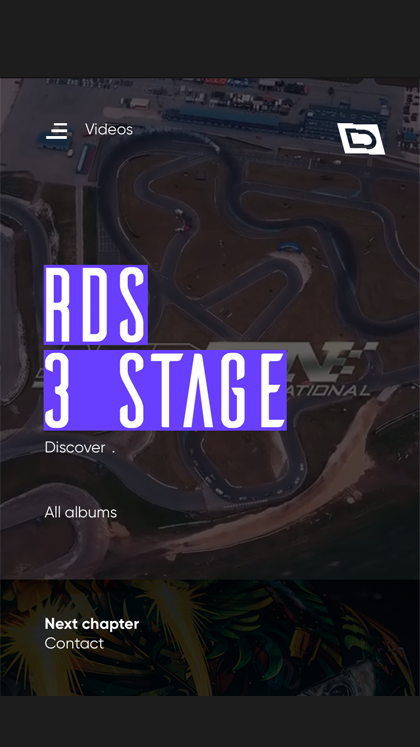Mobile Friendliness 80/100
Configures the viewport
Content is sized correctly for the viewport
Size tap targets appropriately
The following tap targets are close to other nearby tap targets and may need additional spacing around them.
| URL |
|---|
| The tap target <div class="slide__action">Learn more</div> is close to 2 other tap targets final. |
| The tap target <div class="slide__action">Learn more</div> is close to 1 other tap targets final. |
| The tap target <div class="nav__menu menu">BioPhotosVideosContact</div> and 4 others are close to other tap targets final. |
| The tap target <div class="menu__item menu__item_active">Bio</div> is close to 5 other tap targets final. |
| The tap target <div class="modal-menu__item">Photos</div> is close to 1 other tap targets final. |
| The tap target <a href="javascript: void(0)" class="modal-share__item">Facebook</a> and 1 others are close to other tap targets final. |
... |
Uses legible font sizes
Color Contrast is satisfactory
Performance 73/100
Speed Index
-
Speed Index7370target < 4000 ms
The Speed Index measures how quickly the page contents are visually populated / painted, and computes an overall score where lower numbers are better. It is expressed in milliseconds and dependent on size of the viewport (above-the-fold contents). Learn more
Document complete
-
Time125.4seconds
-
Resources108requests
-
Bytes in23.6MB
These metrics are collected from the initial request until the browser considers the page loaded (JavaScript onLoad event). This usually happens after all of the image content has loaded but may not include content that is triggered by javascript execution.
Fully load
-
Time127.4seconds
-
Resources110requests
-
Bytes in23.6MB
These metrics are collected from the initial request until 2 seconds of no network activity after Document Complete (JavaScript onLoad event). This will usually include any activity that is triggered by javascript after the main page loads.
Assets by Domain
Requests
- alexdracing.com
Bytes downloaded
- alexdracing.com
Assets by Mime-Type
Requests
- html
- js
- css
- image
- font
- other
Bytes downloaded
- html
- js
- css
- image
- font
- other
Speed
Load time 125420 ms
Page load is fast enough on 3G
First byte 2064 ms
First meaningful paint 2386 ms
Estimated Input Latency 17 ms (target < 50 ms)
Uses persistent connections (keep alive) Score: 100%
First interactive (beta - experimental) 4713 ms
Consistently Interactive (beta - experimental) Not applicable
Page weight
Uses compression (gzip, zopfli, deflate, brotli) Score: 100%
Uses a CDN for all static assets Score: -1%
Leverage browser caching 1
Minify CSS
Minify HTML
Minify JavaScript
Avoids an excessive DOM size 506 nodes
-
Total DOM Nodes506target < 1,500 nodes
-
DOM Depth13target < 32
-
Maximum Children22target < 60 nodes
Compressed Images
Uses Progressive JPEGs Score: 100 %
Properly Sized Images Potential savings of 6,461 KB (~38,620 ms)
Offscreen images Potential savings of 1,183 KB (~7,070 ms)
First impression
Eliminates render-blocking JavaScript and CSS in above-the-fold content
Your page has 1 blocking CSS resources. This causes a delay in rendering your page.
| URL |
|---|
| https://alexdracing.com/web/css/common.css |
... |
Prioritizes visible content
Improves server response time
Avoids landing page redirects
Usability 100/100
Clicking logo always leads you to homepage.
Key CTAs are visible on the homepage.
No ending trailing paths.
Suports multi-device experiences. Not applicable
For category pages/search result with lots of products, make sure lazy-loading or pagination are used. Not applicable
Possible to swipe to see more images or tap to enlarge them.
Streamlines forms information entry. Not applicable
Forms error warnings. Not applicable
Makes site search visible and user-friendly. Not applicable
Keeps your user in a single browser window.
Best Practices 80/100
Avoids Application Cache
Avoids WebSQL DB
Avoids requesting the geolocation permission on page load
Avoids requesting the notification permission on page load
Avoids deprecated APIs
Allows to paste into password input fields
Registers a Service Worker
Responds with a 200 when offline
Uses HTTPS
Redirects HTTP traffic to HTTPS
Uses HTTP/2 for its own resources 51 requests were not handled over HTTP/2
Uses passive listeners to improve scrolling performance
Avoid using document.write()
Manifest's short_name won't be truncated when displayed on homescreen
Configured for a custom splash screen
User can be prompted to Install the Web App
This report was built using several Google, 3rd-party and Awwwards audit tools and services for metrics, web performance optimization, and best practices for mobile design and development.
Loading time vary depending on network, device, server, site design, and implementation.
These are the environments used to create this report:
| Webpagetest | Test Location | Dulles VA USA |
| Browser | MotoG4 Chrome | |
| Connection | Mobile 3G (1.6 Mbps / 768 Kbps 300ms RTT) | |
| Number of Runs | 1 | |
| User Agent | Default | |
| Lighthouse | User agent | Mozilla/5.0 (Linux; Android 6.0.1; Nexus 5 Build/MRA58N) AppleWebKit/537.36(KHTML, like Gecko) Chrome/61.0.3116.0 Mobile Safari/537.36 |
| Device Emulation | Nexus 5X o MotoG | |
| Network Throttling | 1.4Mbps down, 0.7Mbps up, 562.5ms RTT (PageSpeed uses Chrome on Moto G4 within a 3G network) | |
| CPU Throttling | 4x slowdown | |
| PageSpeed Insights Mobile | Environment | Default |
| TestMySite | Environment | Default |

